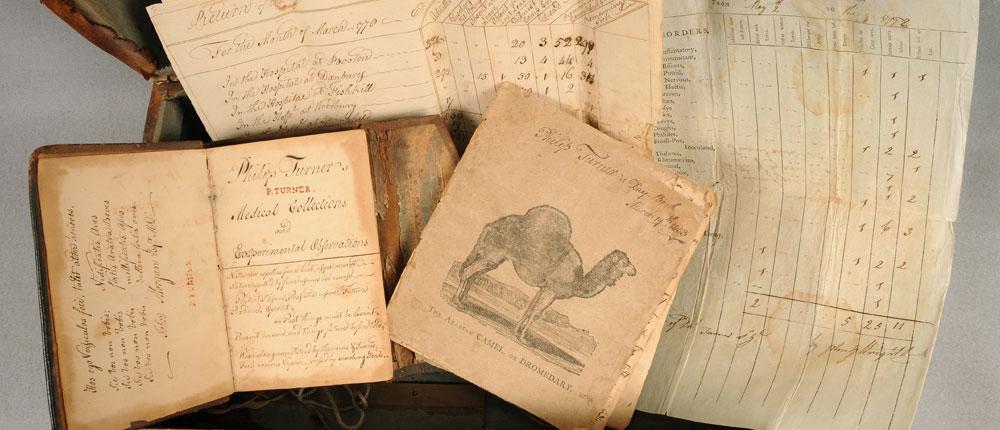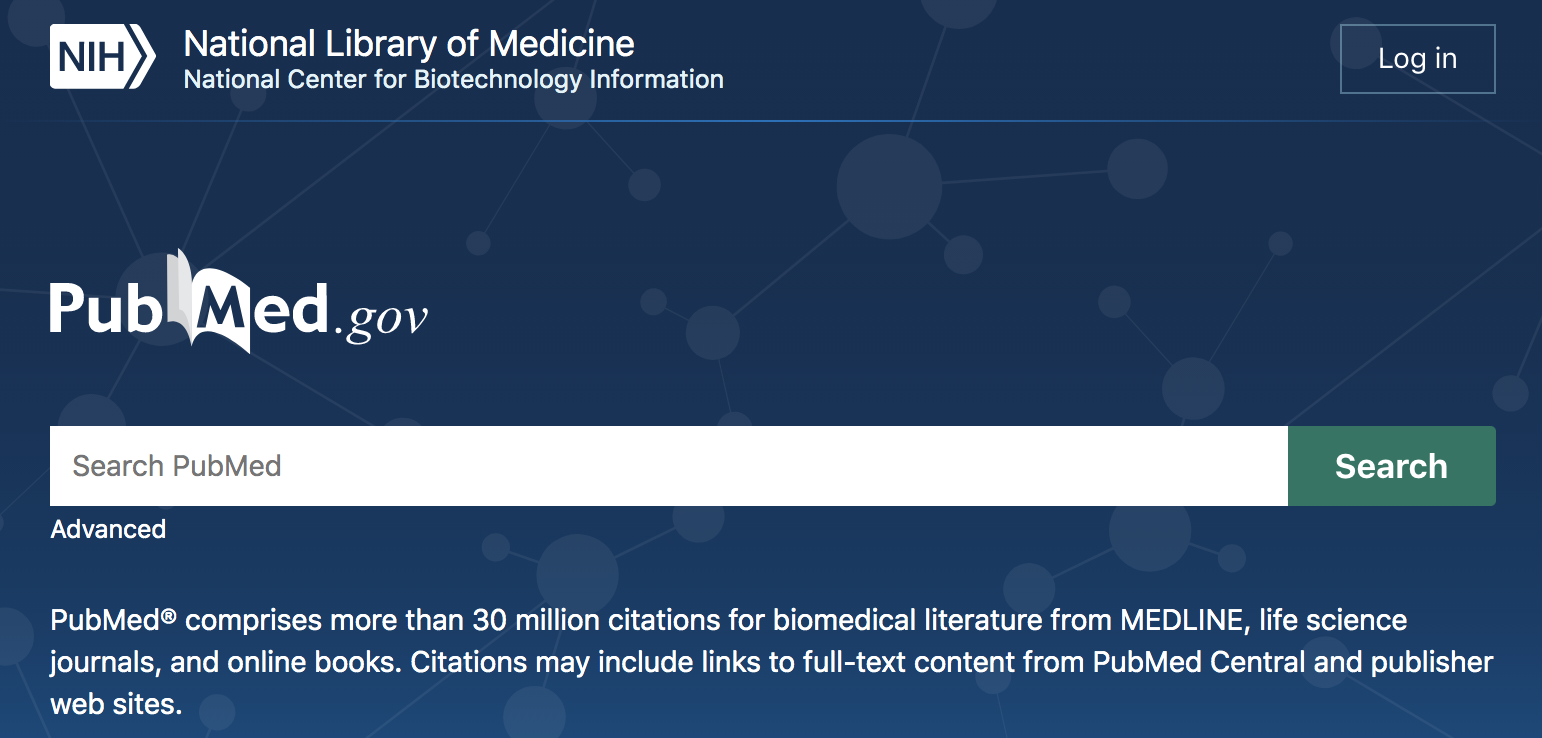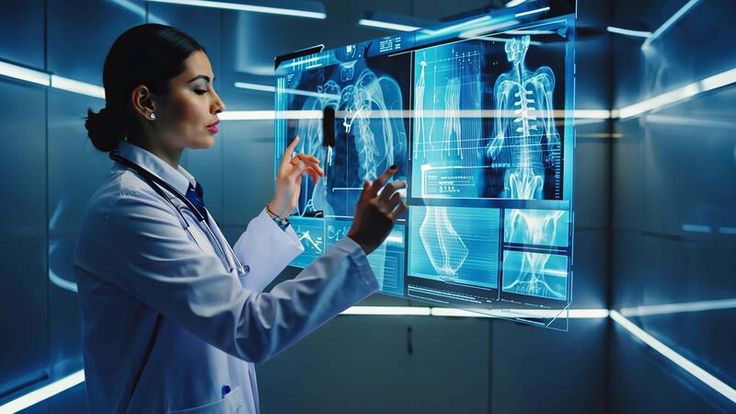Introduction
In today’s fast-moving world, having access to reliable medical knowledge is more important than ever. A physician deciding on treatment, a researcher developing new ideas, a student learning the basics of medicine, or a patient searching for trustworthy answers—all of them depend on accurate health information to make informed choices.
At the heart of this mission stands the National Library of Medicine (NLM). Known as the biggest collection of medical information in the world, the NLM is not just a library—it’s a major hub for knowledge, creativity, and teamwork across the globe. Its role stretches far beyond shelves of books, serving as a foundation for research, education, and advancements in healthcare.
Through resources such as PubMed and numerous specialized databases, the National Library of Medicine has transformed how medical knowledge is gathered, shared, and applied. It is not simply a keeper of history but also a driver of future discovery.

This blog will explore the story of the National Library of Medicine—its origins, mission, resources, influence on global health, digital transformation, challenges, and its role in shaping the future of medicine. Whether you are a medical professional, a researcher, or simply curious about the roots of reliable healthcare information, this journey will help you understand why the NLM is a cornerstone of modern medicine.
The Legacy of the National Library of Medicine
The history of the National Library of Medicine mirrors the progress of medicine itself—a path of constant growth, resilience, and adaptation. What began as a modest collection has become the world’s leading hub for biomedical knowledge.
Early Foundations
The story began in 1836, when a small medical library was created within the U.S. Army Surgeon General’s Office. At first, its purpose was limited: providing doctors in the military with medical texts and resources to improve healthcare for soldiers. Over time, however, as the practice of medicine became more complex and the need for structured knowledge increased, the library began to expand its reach.
A Shift to National Significance
By the early 20th century, the library’s growing collection made it clear that it had moved far beyond its military roots. In 1956, it was officially transferred to the National Institutes of Health (NIH) and given the name National Library of Medicine. This transition marked its evolution from a military archive into a national institution with global influence.
Preserving Knowledge, Inspiring Progress
Today, the National Library of Medicine holds millions of items—ranging from books, manuscripts, and journals to photographs, archives, and digital resources. It not only protects the historical record of medicine but also ensures that current research and discoveries remain accessible to guide the future of healthcare.
The journey of the National Library of Medicine, from a modest government library to a global leader in biomedical information, is a reflection of medicine’s own trajectory. Constantly adapting and expanding, it continues to ensure that the wisdom of the past and the discoveries of the present are available to shape tomorrow’s healthcare solutions.

Mission and Impact of the National Library of Medicine
The National Library of Medicine is far more than a repository of books and journals—it is a dynamic institution with a mission to advance health and medicine worldwide. Its goal is to make accurate medical information accessible, reliable, and useful for professionals, researchers, students, and the public.
At the core of the National Library of Medicine’s mission is the belief that knowledge can save lives. By providing a centralized source of biomedical information, the library empowers doctors to make informed decisions, enables researchers to build on previous discoveries, and helps students learn from the most credible sources available. Its impact extends beyond the walls of the library, influencing global healthcare practices, public health policies, and medical education.
Expanding Access to Knowledge
One of the National Library of Medicine’s most significant contributions is its role in democratizing access to medical information. Through digital platforms, such as PubMed, ClinicalTrials.gov, and other online resources, millions of people around the world can access authoritative health information anytime, anywhere. This accessibility has narrowed the gap between developed and developing regions, allowing healthcare providers in remote areas to benefit from cutting-edge research and guidance.
Supporting Research and Innovation
The library also serves as a catalyst for medical research. By maintaining vast collections of journals, databases, and historical records, the National Library of Medicine provides researchers with the tools they need to generate new knowledge. Scientists studying diseases, developing treatments, or exploring public health trends rely on these resources to ensure their work is grounded in verified evidence.
Influencing Public Health and Policy
Beyond research, the National Library of Medicine plays a vital role in shaping public health strategies. Its data supports health organizations, governments, and educational institutions in creating policies that are evidence-based. From epidemic response planning to vaccination campaigns, the library’s information guides decisions that affect populations globally.
Educating and Empowering Users
Education is another cornerstone of the National Library of Medicine’s mission. The library offers training programs, tutorials, and resources to help users navigate complex medical databases effectively. By teaching healthcare professionals and students how to retrieve and interpret information accurately, the National Library of Medicine ensures that knowledge is not only available but also actionable and practical.
Its mission extends far beyond storing information—it actively shapes how medicine is practiced, researched, and taught, ultimately influencing health outcomes across the globe.
Key Resources and Databases
These tools are designed to provide accurate, up-to-date information for professionals, researchers, and students, helping them make informed decisions and advance medical knowledge.
PubMed: The Cornerstone of Biomedical Research
PubMed allows users to search for studies on almost any medical topic, ranging from clinical trials to reviews of emerging treatments. Its advanced search capabilities, including the use of MeSH (Medical Subject Headings) terms, make it easier for researchers to find precise information efficiently.

ClinicalTrials.gov: Tracking Global Research
Another critical resource is ClinicalTrials.gov, which provides information about ongoing and completed clinical studies. Researchers, physicians, and patients can track studies on a wide range of conditions, access study results, and even identify potential opportunities for participation. This platform promotes transparency in medical research and ensures that the global community can monitor and evaluate new treatments and therapies.
GenBank and Molecular Databases
For those working in genetics and molecular biology, the National Library of Medicine offers GenBank, a comprehensive database of DNA sequences from organisms worldwide. This resource is essential for researchers studying genetics, infectious diseases, and biotechnology. Coupled with other molecular biology databases, it allows scientists to analyze, compare, and interpret complex biological data, fueling discoveries in personalized medicine and genomics.
Specialized Tools for Professionals
Beyond these widely used platforms, the NLM provides a suite of specialized resources tailored for healthcare professionals. These include databases for drug information, toxicology reports, health statistics, and medical imaging archives. Each tool is designed to give users precise, actionable information to support clinical decision-making and research.
Educational Resources for Students and the Public
The National Library of Medicine also emphasizes education and accessibility. Platforms like MedlinePlus offer health information in simple language for patients and the general public, making complex medical concepts understandable. This ensures that the benefits of medical knowledge extend beyond professionals to anyone seeking reliable health information.
Through these resources, the National Library of Medicine bridges the gap between data and action, empowering users to make evidence-based decisions, conduct innovative research, and enhance public health outcomes. Its databases are not merely collections—they are living tools that continually support the advancement of healthcare worldwide.
Digital Transformation of the NLM
Over the past decades, it has embraced technology to make medical knowledge more accessible and interactive. Moving from traditional print collections to fully digital platforms, the National Library of Medicine has redefined how healthcare professionals and the public engage with information.
Embracing Digital Access
One of the most significant advances has been the digitization of vast collections, allowing users to access journals, manuscripts, and historical records online. No longer confined to a physical location, the National Library of Medicine’s resources are available globally, breaking down geographical barriers to knowledge.
Integration of AI and Big Data
The library is also at the forefront of artificial intelligence and big data applications in medicine. By analyzing large datasets, AI tools help researchers identify patterns, predict outcomes, and accelerate discoveries. These innovations not only make research more efficient but also support precision medicine and public health planning.

Interactive and User-Friendly Platforms
The NLM has invested heavily in creating intuitive, user-friendly platforms. Tools such as PubMed’s updated interface, MedlinePlus tutorials, and customized research guides make it easier for users to find the information they need quickly, improving both efficiency and learning outcomes.
NLM’s Role in Public Health and Education
Beyond providing research tools, the National Library of Medicine plays a pivotal role in public health and medical education. Its resources are designed not only for professionals but also for educators, students, and the general public.
Educating Healthcare Professionals
The NLM offers training programs, webinars, and tutorials to teach medical professionals how to navigate complex databases and interpret research effectively. This ensures that healthcare decisions are informed by the most reliable evidence available.
Supporting Public Health Initiatives
By maintaining accessible and comprehensive data on diseases, epidemics, and health trends, the NLM supports public health policy and planning. Governments and health organizations use its resources to design interventions, track outbreaks, and evaluate health outcomes.
Promoting Health Literacy
For the general public, websites like MedlinePlus and health tutorials assist people in learning about medical conditions, available treatments, and ways to prevent illnesses. By promoting health literacy, the NLM empowers people to take an active role in managing their health.
Using the NLM: A Practical Guide
While the National Library of Medicine is a treasure trove of information, its true value comes from knowing how to use it effectively. Whether you are a researcher, student, or healthcare professional, understanding the tools and strategies to navigate the NLM’s resources can significantly enhance your work.
Navigating PubMed Efficiently
To get the best results, users can employ MeSH (Medical Subject Headings) terms to refine searches and target relevant studies. Advanced filters allow sorting by publication date, article type, and language, making it easier to access the most reliable and recent research.
Exploring ClinicalTrials.gov
For those interested in research or treatment options, ClinicalTrials.gov provides detailed information on ongoing and completed studies. Users can search by condition, intervention, or location, enabling participation opportunities or identifying new evidence for medical decision-making.
Leveraging Specialized Databases
Other National Library of Medicine resources, such as GenBank and drug information portals, allow researchers to delve into genetic data, toxicology studies, and pharmaceutical references. These platforms are essential for specialized research and clinical applications.
Tips for Students and Educators
Students and educators benefit from tutorials, online courses, and research guides offered by the NLM. Learning how to efficiently locate and interpret information not only saves time but also strengthens research quality and academic performance.
NLM and Medical Innovation
Beyond being a repository of knowledge, the National Library of Medicine actively drives innovation in medicine by supporting research and encouraging collaboration across institutions.

Supporting Biomedical Research
The NLM provides the data infrastructure that researchers need to explore new treatments, understand diseases, and develop innovative healthcare solutions. By maintaining historical and current datasets, it ensures that scientists can build upon previous discoveries rather than starting from scratch.
Facilitating Collaboration
Through digital platforms and open-access resources, the National Library of Medicine connects researchers, institutions, and clinicians globally. This collaborative environment fosters faster knowledge exchange, enabling quicker solutions to medical challenges.
Advancing Technology in Medicine
The library also contributes to the development of cutting-edge medical technologies, including AI-assisted diagnostics, predictive modeling for disease outbreaks, and personalized medicine. By integrating technology with vast amounts of health data, the National Library of Medicine helps transform how medicine is practiced and taught.
Case Studies of Innovation
From accelerating research on rare diseases to supporting public health responses during epidemics, the NLM has repeatedly demonstrated its role as a catalyst for medical breakthroughs. Its combination of data, tools, and expertise provides the foundation for discoveries that improve healthcare outcomes worldwide.
Challenges and Criticisms
Even as a world-leading institution, the National Library of Medicine faces several challenges and areas for improvement. Understanding these obstacles provides a more complete picture of its operations and influence.
Information Overload
With millions of articles, journals, and datasets, the sheer volume of information can be overwhelming for users. While access to extensive resources is valuable, it also requires careful navigation and critical evaluation to avoid confusion or misinterpretation.
Accessibility Gaps
Although the NLM has expanded digital access, not all regions of the world benefit equally. Limited internet connectivity, language barriers, and insufficient awareness of available resources can prevent some users—especially in developing countries—from fully leveraging the library’s offerings.
Balancing Privacy and Open Data
Providing access to research and clinical information while maintaining patient privacy and data security is a constant challenge. The National Library of Medicine must carefully manage sensitive data to ensure ethical and legal compliance while still enabling valuable research.

Keeping Pace with Rapid Advancements
Medicine and technology are evolving rapidly, and the NLM must continually update its systems, databases, and tools. Adapting to new technologies while maintaining high standards of accuracy and reliability is an ongoing effort.
Despite these challenges, the NLM continues to innovate and adapt, demonstrating resilience and a commitment to improving global access to medical knowledge.
The Future of the National Library of Medicine
As medicine enters a new era of digital innovation and personalized healthcare, the National Library of Medicine is positioned to play an even greater role in shaping the future.
AI and Advanced Analytics
Artificial intelligence and machine learning will increasingly be integrated into the NLM’s platforms. These technologies can analyze large datasets faster, detect patterns, and predict health outcomes, supporting both research and clinical decision-making.
Enhancing Global Collaboration
The National Library of Medicine is likely to expand partnerships with international health organizations, universities, and research institutions. This global collaboration will promote knowledge sharing, joint research projects, and faster responses to emerging health challenges.
Supporting Personalized Medicine
As personalized and precision medicine gain prominence, the NLM’s databases will be critical for accessing genetic, clinical, and treatment data. Researchers and clinicians will rely on these resources to tailor interventions to individual patients, improving outcomes and efficiency.
Digital Health and Education
The NLM will continue to enhance digital learning tools, virtual training programs, and public health education platforms. These initiatives will ensure that healthcare professionals and the public remain informed in an era of rapid medical advancement.
The future of the National Library of Medicine is not just about storing knowledge—it’s about actively shaping how medicine is practiced, researched, and taught worldwide, ensuring that information continues to save lives and improve health outcomes.

Conclusion
The National Library of Medicine is more than just a library—it’s a powerful engine driving medical knowledge, innovation, and public health worldwide. From historical archives to cutting-edge digital databases like PubMed and ClinicalTrials.gov, the NLM ensures that researchers, healthcare professionals, and students have fast, reliable access to the information they need.
By embracing digital transformation, AI, and global collaboration, the National Library of Medicine continues to shape the future of medicine, making research more accessible, discoveries faster, and health education more effective. While challenges like information overload and accessibility gaps remain, the library’s commitment to innovation and knowledge-sharing keeps it at the forefront of healthcare progress.
Now we want to hear from you: How do you think resources like the NLM will change the way we learn about health and medicine in the next decade?
Learn MoreMore Blogs
